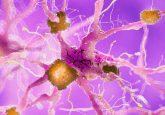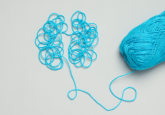How to CRACK the code behind touch perception

The newly developed CRACK platform utilizes brain activity patterns of mice to uncover neural circuits involved in touch perception.
In a recent study, Jerry Chen’s Boston University (MA, USA) team, alongside collaborators from the Allen Institute for Brain Science (WA, USA), has developed a new platform that identifies dedicated circuits of brain cells in mice that perceive touch from environmental stimuli. This highlights areas of the brain that can be specifically targeted in future treatments for neurological disorders that alter perception, including autism and stroke.
“When we perceive our environment, we’re actually doing two things,” explained Chen. “We’re taking in all the senses, all the physical elements of the world; at the same time, we are applying our own types of inference, subjective interpretation of what we think we’re perceiving.”
The Allen Institute had previously produced the atlas of the mouse brain which catalogs the molecular composition of different neuron types. Chen aimed to build upon this catalog using the activity pattern information for the different neurons, enabling evaluation of neuron function.
Chen’s team combined the in vivo techniques of two-photon calcium imaging and multiplexed fluorescence in situ hybridization to create their evaluation platform called Comprehensive Readout of Activity and Cell type MarKers (CRACK). The CRACK platform allows researchers to stimulate a region of the brain, identify the firing neurons and revealing their spatially resolved transcriptomic profiles before computing all of this data.
 How smells can linger in your memory
How smells can linger in your memory
Researchers find that scents are not only processed by the olfactory center, but also by the brain’s reward and aversion systems, explaining how scents take on meaning.
The CRACK platform was used as the mice performed a whisker-based touch perception memory task and during sensory deprivation. This aimed to characterize the behavior-related responses and functionality of excitatory and inhibitory nerve cell types in layers 2 or 3 of the primary somatosensory cortex, which is responsible for processing somatic stimuli.
“It’s another level of understanding for how everything fits together,” commented Chen. “The biggest thing is that we’ve married the catalog with the functional definition—that’s really going to open up a lot of ways for us to understand the brain.”
One of the excitatory cell types investigated was Baz1a, which exhibited high tactile feature selectivity. Baz1a neurons maintain stimulus responsiveness when there are changes in the environment and differences in touch stimuli and also contained high expression levels of plasticity related genes including Fos.
The Baz1a neurons form a circuit in the primary somatosensory cortex dedicated to processing touch perception information, utilizing strong functional connections with somatostatin-expressing inhibitory neurons. This circuit is able to then communicate with others nearby, establishing meaning and other sensory responses to these stimuli, which can form subjective behavioral responses upon encountering the stimulus again.
Chen predicts the discovery will allow for highly localized treatments targeting only the dedicated touch perception circuits for people with perception altering neurological disorders. This highly specific targeting will help avoid the widespread impacts of a single therapeutic on neuronal circuits in the brain with different specializations.
“Our overall goal is to understand the human brain, and so a lot of this cataloguing that’s happening in the mouse brain, is really just a pilot for being able to generate a similar catalog of the human brain.” Chen added.





